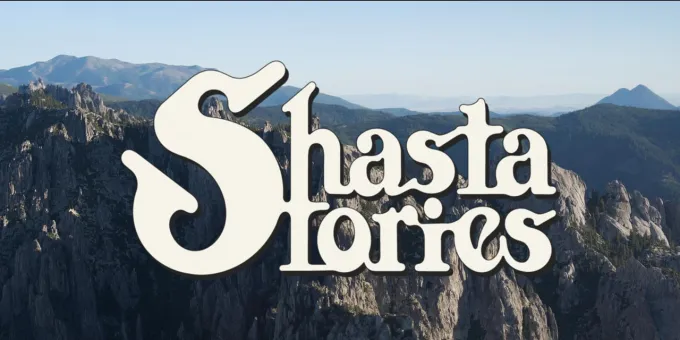For centuries, Mt. Shasta has dazzled those who encounter it. Native California tribes have told legends about the 14,179-foot peak, and naturalist John Muir once wrote that his “blood turned to wine” when he first saw it.
In the latest episode of the California Now Podcast, two artistic-minded women from the Shasta Cascade chat with host Soterios Johnson about what makes this region of volcanoes and lakes so inspiring, from the eye-popping scenery to the fascinating denizens who call it home.
The episode begins with singer-songwriter Jessica Malone, who grew up in Mt. Shasta City, a tiny Siskiyou County town that sits in the shadow of the namesake mountain. “Growing up in Mt. Shasta and the middle of the woods really shaped who I am,” she says. “I have always been very connected to nature so that's where I go when I want to feel grounded—and that's where some of my best songs come from.”
Malone notes that she wrote the song “Sweet Sunlight” on a blissful day spent at a swimming hole by the Sacramento River. “I was lying on the riverbank and I was just blissed out from the sunshine, so I wanted to write a song that sounded like sunlight.” She calls another song, “Gold Flowers of the West,” “my love song for California. It speaks to all the beauty that's in California that's just a drive away—the desert, the ocean, the rivers, the mountains, the redwoods.”
She tells Johnson about some local spots where she likes to bliss out today. She suggests browsing the shops along Mt. Shasta Boulevard, such as The Fifth Season, “where you can get all kinds of [outdoor] gear for hiking and camping and lakes and rivers and just so much outdoor activity.” During warmer months, she loves the Sacramento River headwaters found at Mt. Shasta City Park. “That's where the water goes through the underground lava tubes—it's crystal clear and pure.” In winter and summer alike, she adds, “Mt. Shasta Ski Park is really cool. You can go snowmobiling or sledding, and in the summer you can hike the mountain. You feel like you're getting a close look at it, and great views.”
Filmmaker Autie Carlisle offers another perspective on the town of 3,000. Carlisle grew up in Mt. Shasta but had moved away to pursue a career as a fashion designer in San Francisco and New York. When the pandemic hit, she came home to Mt. Shasta and made her filmmaking hobby into a profession.
“I felt like the universe had sent me back to Shasta and said, you need to understand where you came from,” she says. One day she started chatting with a street painter and asked to document his interactions with locals. “I just thought, ‘Who is this guy?’ He had lived in Mt. Shasta since about a year before I was born, and I had never met him. Then I started looking around at other people that I was curious about.” The project turned into her documentary series Shasta Stories, which had its own local screenings and is now available for online viewing.
Along the way, Carlisle has met some pretty interesting people‚ such as Two-Leaf Meadows, a blind Cherokee Indian who throws tomahawks; a third-generation logger; and a spiritual author who goes by the name Peter Mt. Shasta. “My goal is to try to show the diversity in the area…and ask, why is this your home? Maybe it's in Mt. Shasta, Weed, Dunsmuir, McCloud, anywhere in Siskiyou County. I realized that people were hungry to know their neighbors. Maybe it was just curiosity or a little bit of gossip, but [at the screenings], they got to see something very genuine.”
Carlisle also offers her own tips on exploring Siskiyou County—including the Weed thrift shop Weed Mercantile Mall, Phet’s Kitchen Phó & BBQ, and the First & Last Chance Saloon in Hornbrook. “It feels like walking back in time,” she says of the bar. “You feel like a local.”
Exploring the area always offers the chance to interact with more locals. “You'll see them up in the ski park, and at the City Park on Sundays, they have drum circles,” she says. At the headwaters, she adds, “there are always people sitting who are up for chatting. You just have to have your eyes open—and start a conversation.”
